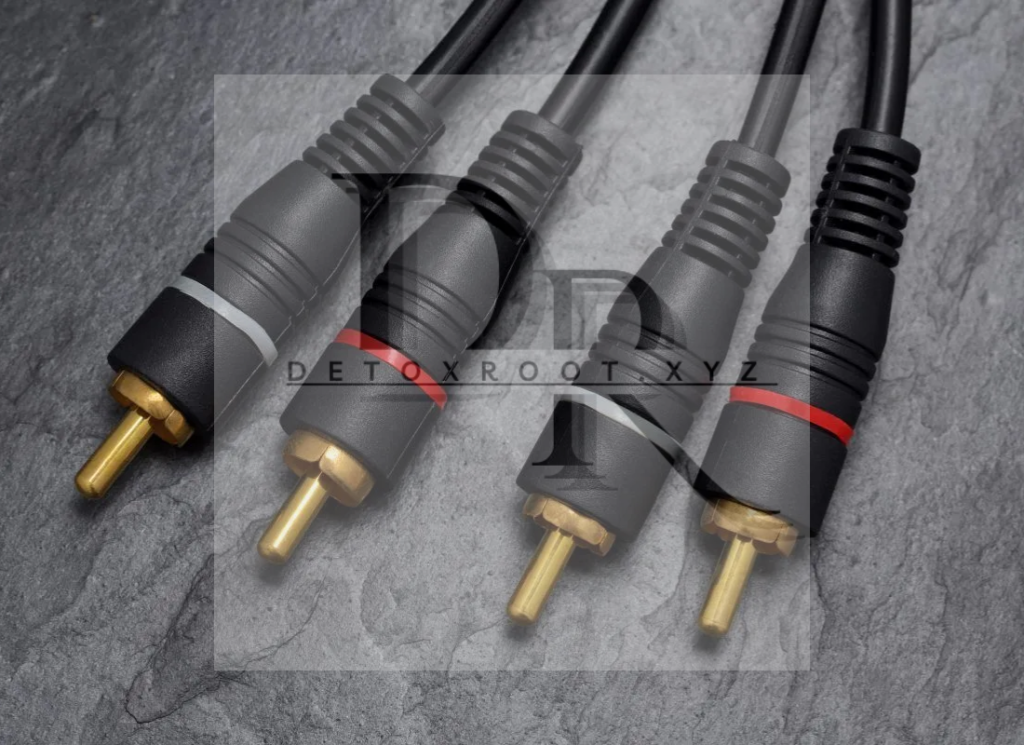In today’s digital world, audio quality has become an essential part of the overall user experience, whether for music, movies, gaming, or communication. The 3.5mm audio adapter, a compact yet powerful tool, plays a critical role in enhancing audio connectivity and quality across various devices. Despite the rise of wireless options, the 3.5mm audio jack remains widely used, offering reliable performance and compatibility across a vast array of gadgets, including smartphones, tablets, laptops, and audio equipment. In this article, we’ll explore the benefits of a 3.5mm audio adapter, its uses, types, and tips for optimizing your audio experience.
1. What is a 3.5mm Audio Adapter?
A 3.5mm audio adapter, often referred to as a headphone adapter or audio jack adapter, enables users to connect audio devices with a 3.5mm audio jack to other devices that may not have a standard audio port. As manufacturers have increasingly moved away from traditional audio jacks in favor of USB-C or Lightning ports, these adapters have become essential tools for maintaining compatibility between newer devices and wired audio gear.
a) Types of 3.5mm Audio Adapters
There are several types of 3.5mm audio adapters available to cater to different device setups:
- 3.5mm to USB-C Adapter: For connecting 3.5mm headphones or audio equipment to devices with a USB-C port, like many newer Android smartphones and laptops.
- 3.5mm to Lightning Adapter: For connecting wired headphones to iPhones or iPads with a Lightning port, providing Apple users with a seamless audio connection.
- 3.5mm Splitters: These adapters split the audio signal into two 3.5mm jacks, allowing users to connect two pairs of headphones or speakers to the same device.
- 3.5mm TRRS Adapters: For connecting headsets with both audio and microphone functionality, TRRS adapters support four-pole connections, which are essential for combining sound and mic signals in one connection.
b) Benefits of Using a 3.5mm Audio Adapter
The primary advantage of a 3.5mm audio adapter is that it preserves compatibility between devices that may have different ports. Beyond compatibility, these adapters also maintain high audio quality, offer minimal latency, and allow users to continue using their favorite wired headphones and audio equipment without investing in new devices.
2. The Advantages of Using a 3.5mm Audio Adapter
While wireless technology has become more popular, the 3.5mm audio adapter continues to offer distinct advantages in terms of sound quality, compatibility, and reliability. Here’s a closer look at the main benefits of using a 3.5mm audio adapter.
a) Superior Audio Quality and Stability
One of the most notable benefits of using a 3.5mm audio adapter is the superior audio quality that wired connections provide. Unlike wireless options, which can suffer from compression and potential interference, wired connections using 3.5mm adapters deliver clear, high-quality sound without latency issues. This is particularly advantageous for audiophiles, musicians, and anyone who prioritizes pristine sound quality for music, movies, or calls.
b) Versatile Compatibility Across Devices
The 3.5mm audio adapter allows users to connect their headphones or speakers to a wide range of devices, including those that may lack a 3.5mm jack. For instance, many modern smartphones, tablets, and laptops now come with USB-C or Lightning ports only, eliminating the traditional headphone jack. The 3.5mm adapter bridges this gap, making it easy to use wired headphones or audio gear with nearly any device.
c) Minimal Latency for Real-Time Applications
Latency, or audio delay, can be a significant issue for gamers, podcasters, and professionals who rely on real-time audio. Bluetooth audio connections can introduce latency that disrupts timing in applications where accurate sound syncing is crucial. A 3.5mm audio adapter eliminates this delay, offering a wired connection that is nearly instantaneous, making it perfect for gaming, streaming, and content creation.
d) Cost-Effective Solution for Wired Audio Gear
For users who have invested in high-quality wired headphones, speakers, or audio gear, a 3.5mm adapter provides a cost-effective solution to continue using these products without needing to purchase new equipment. Whether you own premium studio headphones or simple earphones, an adapter allows you to connect them seamlessly to newer devices, saving you money and maximizing the value of your audio gear.
3. Different Types of 3.5mm Audio Adapters
With various devices and audio setups in mind, 3.5mm audio adapters come in different formats to support unique needs. Here are some of the most common types and how they cater to different requirements:
a) USB-C to 3.5mm Audio Adapter
USB-C to 3.5mm adapters are essential for connecting headphones or speakers to devices with USB-C ports but no headphone jack, such as many newer Android smartphones, tablets, and laptops. These adapters usually support high-resolution audio and maintain sound quality, even when transmitting through a digital-to-analog conversion (DAC) chip built into the adapter.
b) Lightning to 3.5mm Audio Adapter
For Apple users, the Lightning to 3.5mm audio adapter enables the use of wired headphones with iPhones and iPads that lack a headphone jack. These adapters are designed to provide compatibility with Apple’s Lightning port and often include Apple-certified DAC chips to ensure optimal audio quality and seamless operation.
c) TRRS 3.5mm Adapter
TRRS (Tip-Ring-Ring-Sleeve) adapters support four-pole connections, combining both audio and microphone signals in a single 3.5mm jack. These adapters are ideal for headsets with integrated microphones, allowing users to use the mic and headphones simultaneously. This type of adapter is useful for video calls, gaming, and other applications that require both audio output and input.
d) Audio Splitters and Dual Adapters
Audio splitters, also known as dual adapters, allow users to connect multiple pairs of headphones or speakers to the same device. Some splitters also offer separate jacks for headphones and a microphone, making them ideal for gaming, podcasting, or recording setups that require both output and input connections.

4. Tips for Choosing the Right 3.5mm Audio Adapter
When selecting a 3.5mm audio adapter, it’s essential to consider compatibility, sound quality, and durability to ensure a seamless and long-lasting experience. Here are some tips to help you choose the best adapter for your needs:
a) Verify Compatibility with Your Device
Not all adapters are universally compatible, so it’s crucial to check that the adapter you choose is designed to work with your device. For instance, Lightning adapters are specifically designed for Apple devices, while USB-C adapters are generally compatible with Android devices and certain laptops.
b) Look for a Built-In DAC for High-Resolution Audio
Digital-to-analog conversion (DAC) is necessary for high-quality audio transmission. Many 3.5mm audio adapters include a built-in DAC chip, which ensures that digital signals are accurately converted to analog without losing sound quality. If audio fidelity is a priority, choose an adapter with a quality DAC for the best listening experience.
c) Choose a Durable Build with Quality Materials
Since adapters are small accessories that are used frequently, durability is essential. Look for adapters made with quality materials, such as aluminum casing, braided cables, or reinforced connectors, to prevent wear and tear. A sturdy adapter will withstand daily use and last longer, making it a worthwhile investment.
d) Opt for a Compact Design for Portability
Portability is key for accessories like audio adapters, which are often used on the go. Compact designs are easier to carry in a pocket, purse, or backpack, allowing you to take the adapter wherever you need it without adding bulk.
5. Enhancing Your Audio Experience with a 3.5mm Audio Adapter
Using a 3.5mm audio adapter not only improves compatibility but can also enhance your audio experience by ensuring optimal sound quality and connectivity. Here’s how a 3.5mm adapter can elevate your audio experience:
a) Achieving High-Fidelity Sound with DAC Adapters
Adapters equipped with a built-in DAC chip convert digital audio signals into analog with precision, delivering clear, rich sound. This feature is particularly beneficial for those using high-end headphones or audio equipment, as it preserves the integrity of the audio signal, allowing users to enjoy every detail of their music, podcasts, or calls.
b) Enhanced Control for Musicians and Audio Professionals
For musicians, podcasters, and other audio professionals, a 3.5mm adapter with low latency and high audio fidelity is essential for accurate monitoring and playback. The wired connection ensures that sound is delivered in real-time, without the risk of lag or interference that can disrupt the creative process. This is particularly important for audio mixing, recording, and live performance.
c) Better Gaming Experience with Real-Time Audio
Gamers benefit significantly from using a 3.5mm audio adapter, as it delivers real-time audio without latency. With a direct connection to wired headphones or headsets, gamers can enjoy immersive soundscapes and precise sound effects that enhance gameplay. The lack of audio delay is especially valuable in competitive games, where timing is crucial.
d) Increased Productivity for Remote Work and Virtual Meetings
For remote workers, a 3.5mm audio adapter allows the use of wired headphones or headsets with high-quality microphones, ensuring clear audio during virtual meetings. Many adapters support TRRS connections, allowing the simultaneous use of headphones and a microphone, resulting in more effective communication.
6. Troubleshooting Common Issues with 3.5mm Audio Adapters
While 3.5mm audio adapters are generally straightforward to use, occasional issues may arise. Here are some common problems and troubleshooting tips to resolve them:
a) No Sound or Intermittent Audio
If no sound or intermittent audio occurs, check that the adapter is securely connected to both the device and headphones. Dust or debris in the ports can also interfere with the connection, so clean the jacks if necessary. Additionally, try a different set of headphones or restart the device to rule out other potential causes.
b) Static or Poor Sound Quality
If you experience static or poor sound quality, the issue may be due to a low-quality adapter or damaged connectors. Ensure that you’re using a high-quality adapter with a reliable DAC chip if applicable, and consider testing the adapter on another device to identify if the adapter itself is the problem.
c) Adapter Not Recognized by Device
If your device doesn’t recognize the adapter, it may be incompatible with your device’s port type (e.g., USB-C or Lightning). Check for compatibility and, if needed, try an adapter certified for your device. Some devices may also require specific adapters from the manufacturer, especially with Apple products, which may have proprietary requirements.
Conclusion
The 3.5mm audio adapter remains a valuable tool for users who appreciate the reliable, high-quality audio of a wired connection. By bridging the gap between newer devices without headphone jacks and traditional audio equipment, these adapters enhance both versatility and audio quality. From superior sound fidelity to low latency for real-time applications, a 3.5mm audio adapter enables users to enjoy seamless connectivity across a range of devices.
Whether you’re an audiophile, a gamer, a remote worker, or someone who simply values crystal-clear sound, a high-quality 3.5mm audio adapter can make a significant difference in your audio experience. With the right adapter, you can enjoy your favorite audio gear to its fullest potential, ensuring high-quality sound and compatibility across all your devices.



